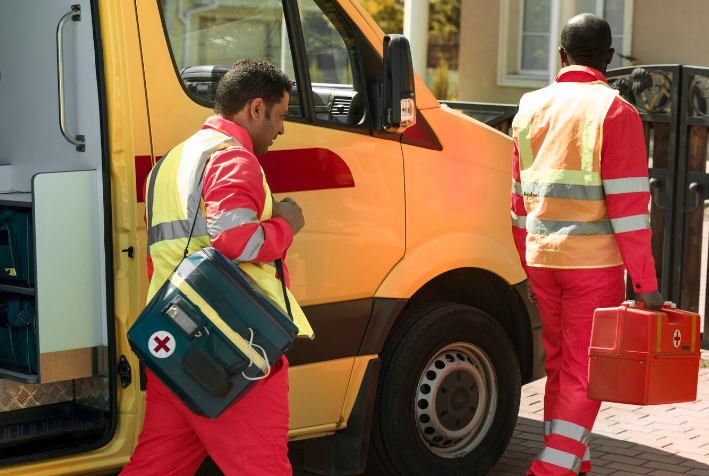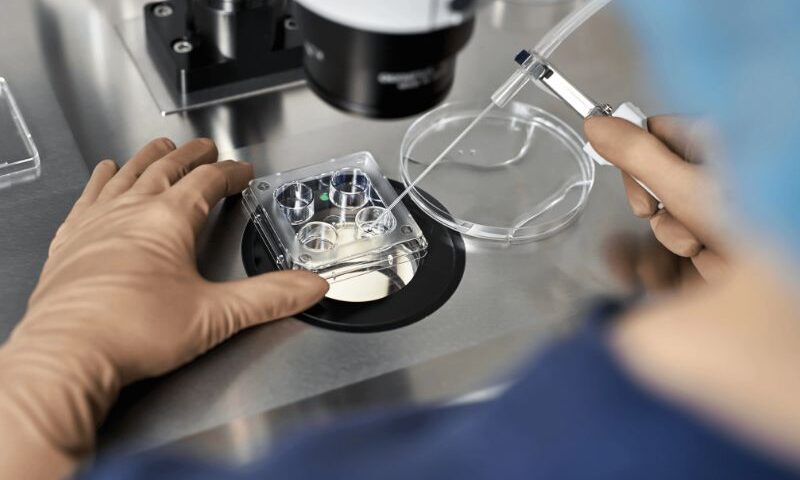Natural disasters, whether earthquakes, floods, or severe storms, have the potential to cause widespread devastation. In such critical moments, the response of emergency services, especially ambulances, becomes crucial. In the UAE, UAE Ambulance Service plays an indispensable role in ensuring quick medical assistance and effective disaster management. With the country’s diverse terrain, growing population, and preparedness for various emergencies, understanding the vital function of UAE ambulance services in natural disaster scenarios is key to recognizing how these services save lives and minimize harm.
Importance of Ambulance Services in Natural Disaster Response
Natural disasters often lead to a surge in medical emergencies, ranging from injuries caused by falling debris to life-threatening conditions such as heart attacks or strokes triggered by stress and trauma. The primary goal of UAE Ambulance Service during such times is to provide immediate medical attention and transfer patients to healthcare facilities as swiftly and efficiently as possible. Ambulances become essential lifelines when hospitals are overwhelmed with casualties and emergency care is required in the midst of chaotic, often dangerous conditions.
Key Roles Played by UAE Ambulance Service in Disasters
Rapid Emergency Medical Response
The first priority in any disaster situation is ensuring rapid medical attention to those in need. The UAE Ambulance Service is equipped with modern vehicles that are ready to be deployed at a moment’s notice. These ambulances are staffed with paramedics, emergency medical technicians (EMTs), and other healthcare professionals who are trained in trauma care and disaster medicine. During a disaster, the speed of response is critical to reducing mortality rates. The UAE has invested heavily in its emergency services, ensuring that ambulances can respond to calls in a matter of minutes, particularly in urban areas like Abu Dhabi, where access to injured individuals may be complicated by damaged infrastructure.
Search and Rescue Operations
Ambulances are often part of larger search and rescue operations, especially in areas that have suffered severe damage. UAE Ambulance Service collaborates with local authorities, fire brigades, and military personnel to locate survivors and provide immediate medical care. In some cases, ambulances are used as mobile treatment centers in the field, stabilizing patients before transporting them to the hospital. Whether the disaster involves collapsed buildings, floods, or hazardous material spills, emergency responders in ambulances are trained to assess the situation, offer first aid, and move patients from danger zones efficiently.
Field Triage and Medical Assistance
Once on the scene of a disaster, UAE Ambulance Service teams play a critical role in triage – the process of sorting casualties based on the severity of their injuries. In situations where the number of victims exceeds the available resources, paramedics prioritize those in life-threatening conditions. This triage process ensures that the most critical patients receive care first, optimizing the limited resources available. Additionally, ambulances often carry medical supplies and equipment that allow paramedics to provide immediate care at the disaster site. This includes oxygen, defibrillators, and trauma kits, allowing teams to stabilize patients before transport to hospitals.
Transport of Casualties to Medical Facilities
After providing initial care at the site of a disaster, one of the most crucial functions of UAE Ambulance Service is transporting patients to medical facilities for further treatment. Whether it’s a local clinic or a specialized hospital, ambulances are equipped to safely transport victims, ensuring they receive the care they need in the shortest amount of time. In the UAE, hospitals are often located in busy urban centers, making transportation to and from these facilities a challenge during a disaster. Ambulances in the UAE are designed with this in mind, offering not only transportation but also a mobile care unit that can address patient needs during transit.
Psychological First Aid and Support
Disasters often leave deep psychological scars on individuals, and mental health care is just as critical as physical care. UAE Ambulance Service teams are trained to provide psychological first aid, offering emotional support to patients who have experienced trauma. Ambulance personnel are sensitive to the mental strain that disaster victims face and work to provide comfort and stability. This aspect of the service is particularly important in disasters where families may be separated, individuals may lose their homes, or entire communities may be affected. Providing mental health support can alleviate some of the stress and contribute to overall recovery.
Challenges Faced by UAE Ambulance Services in Natural Disasters
While UAE Ambulance Service plays an essential role in disaster response, it is not without its challenges. These challenges can affect the efficiency of the services and the overall success of disaster relief efforts.
Infrastructure and Accessibility Challenges
In many natural disasters, the damage to roads, bridges, and other infrastructure can severely limit the ability of ambulances to access affected areas. Whether it is the collapse of buildings, debris blocking roads, or flooding that washes out transportation routes, emergency medical responders must quickly adapt to these challenges.
The UAE government has invested in improving the resilience of its infrastructure, but challenges still arise when faced with large-scale natural disasters, particularly in more remote areas. The UAE Ambulance Service has taken steps to address these concerns by equipping ambulances with advanced navigation systems and all-terrain capabilities to ensure they can reach those in need, no matter the conditions.
Coordination and Communication
During large-scale disasters, coordination between various emergency response teams is vital. The UAE Ambulance Service operates alongside fire and rescue units, police forces, and military personnel, all of which must communicate seamlessly to ensure an effective response. Given the potential for high volumes of distress calls and competing priorities, maintaining clear communication can be challenging.
Fortunately, the UAE has implemented advanced communication systems that allow for real-time updates, helping emergency teams on the ground respond to rapidly changing situations. The integration of technology helps improve response times and ensures that resources are allocated efficiently during a crisis.
Resource Allocation
Natural disasters can overwhelm local resources. UAE Ambulance Service teams manage limited resources, ensuring maximum reach despite overcrowded hospitals and shortages.
The UAE’s disaster preparedness program includes stockpiling supplies and ensuring timely patient care through ambulances.
The Future of UAE Ambulance Services in Disaster Preparedness
As the UAE continues to evolve, so too does the infrastructure and services related to emergency medical response. UAE Ambulance Service has adopted several advanced technologies to improve the efficiency and effectiveness of its disaster response.
Integration of Drones and Unmanned Vehicles
In the future, drones and unmanned vehicles could become an integral part of emergency medical services. These technologies have the potential to reach victims in hard-to-access areas more quickly than traditional ambulances. The UAE Ambulance Service is exploring the use of drones to deliver medical supplies or even provide remote consultations during a disaster. This would drastically reduce response times and ensure that no one is left without care.
Enhanced Training and Simulation
In response to the growing complexity of disaster scenarios, UAE Ambulance Service is continuously enhancing its training programs. Advanced simulation technologies allow paramedics and emergency medical technicians to practice disaster response in controlled environments. These simulations provide critical experience and improve decision-making abilities during real-life crises.
Training also includes the incorporation of psychological first aid and other emotional support techniques, ensuring that paramedics are not only physically but also mentally prepared to deal with the demands of disaster response.
Collaboration with International Disaster Relief Organizations
The UAE has long been a hub for international cooperation in disaster relief efforts. UAE Ambulance Service works closely with global organizations to share knowledge, best practices, and resources. The country’s location as a central hub for the Middle East makes it an ideal partner in regional and international disaster response efforts, including providing medical assistance to neighboring countries affected by crises.
Conclusion
In conclusion, UAE Ambulance Service plays a critical role in the response to natural disasters, providing essential medical care, facilitating transport, and ensuring overall disaster management. Through rapid response times, advanced equipment, and highly trained personnel, the service is an invaluable resource in times of crisis. As the UAE continues to develop its disaster preparedness strategies, it remains committed to ensuring that its اسعاف ابو ظبي and broader ambulance services are equipped to face any challenge posed by natural disasters. This commitment to innovation and excellence ensures that the lives of residents and visitors are protected when disaster strikes.




